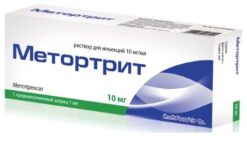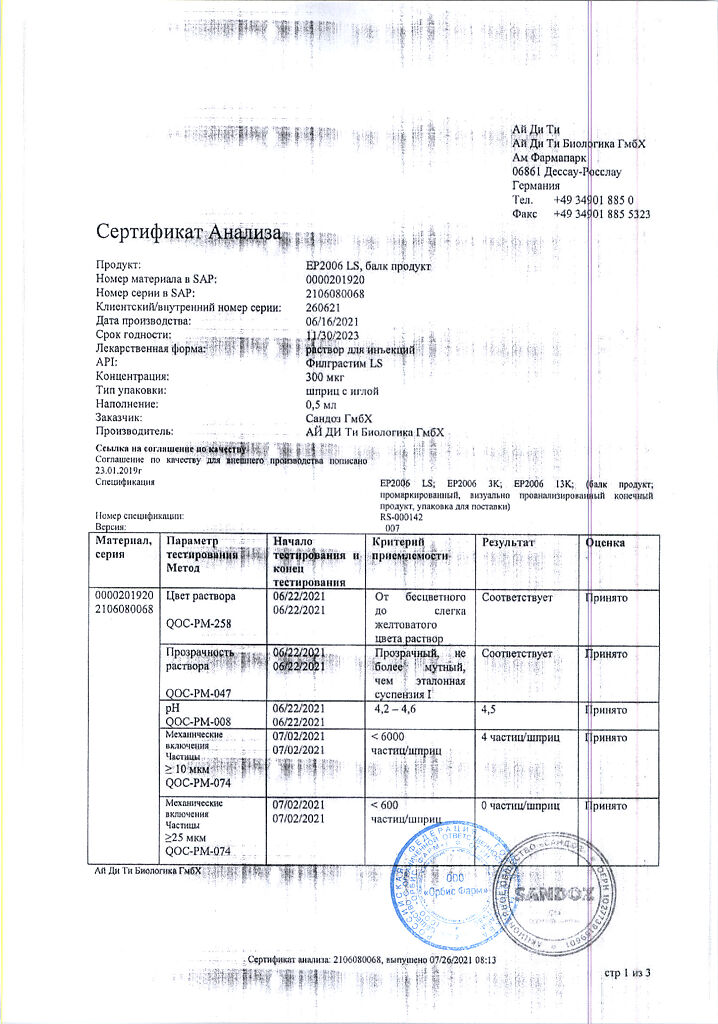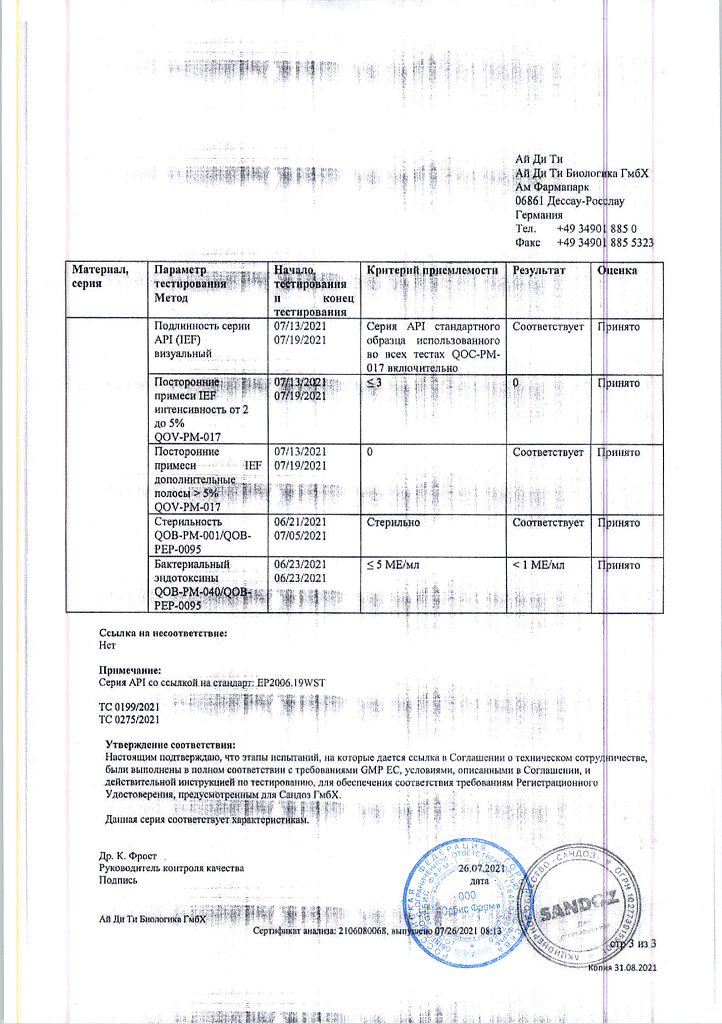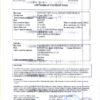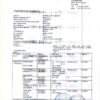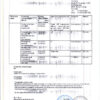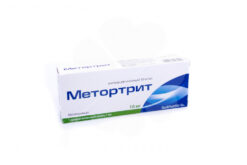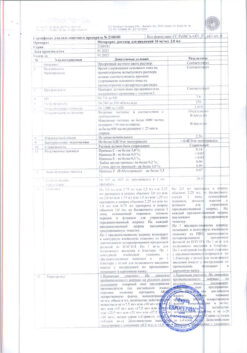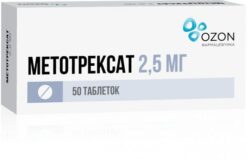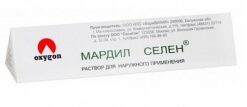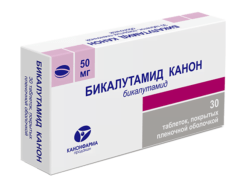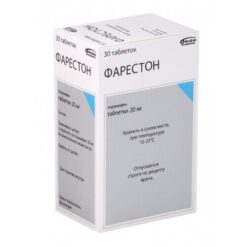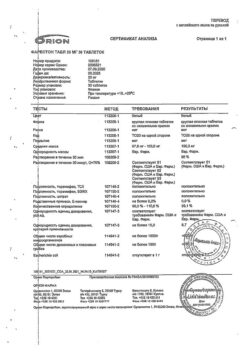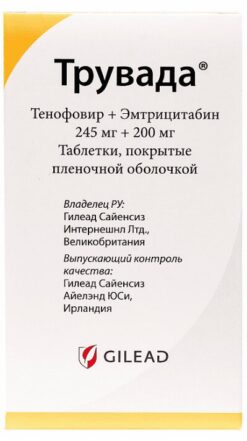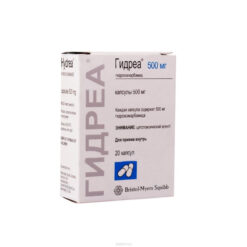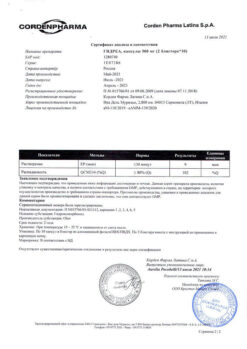Subtotal: €21.84
Phylgrastim is a highly purified non-glycosylated protein consisting of 175 amino acids, or recombinant human granulocytic colony-stimulating factor (r-h G-CSF). It is produced by Escherichia coli strain K12, which has been genetically engineered to contain the human granulocytic colony-stimulating factor (G-CSF) gene. Human G-CSF regulates the production and release of neutrophils from the bone marrow into the peripheral blood.
Philgrastim administration is accompanied by a significant increase in the number of neutrophils in the vascular bed within 24 hours, as well as a slight increase in the number of monocytes. In some cases, an increase in eosinophil and basophil counts is also noted, but eosinophilia and basophilia may be present in some patients before the start of treatment. The increase in neutrophil counts with filgrastim in the recommended dose range is dose-dependent.
Released neutrophils have normal or increased functional activity as confirmed by chemotaxis and phagocytosis tests. At the end of therapy the number of neutrophils in peripheral blood decreases by 50% within 1-2 days and returns to the normal value during the following 1-7 days. Just like other factors of hemopoiesis stimulation, in in vitro studies it has been shown that G-CSF has the ability to stimulate endothelial cells, as they have specific receptors for G-CSF. At the same time, it was found that G-CSF is an inducer of angiogenesis of vascular endothelial cells and accelerates neutrophil transport through the vascular endothelium.
The use of filgrastim in patients receiving cytotoxic drugs is accompanied by a significant reduction in the frequency, severity and duration of neutropenia and febrile neutropenia and allows the use of antibiotics at lower doses compared to patients receiving only cytotoxic chemotherapy. Reduces the need and duration of hospital treatment in patients after induction chemotherapy for myeloleukosis or myeloablative therapy with subsequent bone marrow transplantation. The incidence of body temperature did not decrease in patients after myeloablative therapy followed by bone marrow transplantation.
The use of Zarcio both in monotherapy and after chemotherapy mobilizes the output of hematopoietic stem cells into the peripheral blood stream. Autologous or allogeneic transplantation of peripheral blood stem cells (PBSCs) is performed after therapy with high doses of cytostatics either instead of or in addition to bone marrow transplantation. PSCC transplantation can also be prescribed after (high-dose) myelosuppressive cytotoxic therapy.
The use of PRBCs mobilized with Zarsio accelerates hematopoiesis recovery, reduces the severity and duration of thrombocytopenia, reduces the risk of hemorrhagic complications and the need for platelet transfusions after myelosuppressive or myeloablative therapy.
The use of Zarsio in children and adults with severe congenital neutropenia (recurrent, idiopathic) promotes a steady increase of the number of active neutrophils in peripheral blood and reduces the incidence of infectious and other complications.
The use of Zarsio in patients with HIV infection maintains the number of neutrophils within normal values, which allows to observe the necessary dosing regime of antiretroviral drugs and means of myelosuppressive therapy. There are no signs of increased HIV replication when using Zarsio.
Indications
reducing the duration of neutropenia and the frequency of febrile neutropenia in patients receiving cytotoxic chemotherapy for malignant neoplasms (with the exception of chronic myeloid leukemia and myelodysplastic syndromes), as well as reducing the duration of neutropenia in patients receiving myeloablative therapy followed by bone marrow transplantation, which is considered an increased risk factor for long-term severe neutropenia. The effectiveness and safety of filgrastim are comparable during cytotoxic chemotherapy in children and adults;
mobilization of peripheral stem cells (PSCC), incl. after myelosuppressive therapy, as well as mobilization of peripheral stem cells in healthy donors (allogeneic PSCC);
hereditary periodic or idiopathic neutropenia in adults and children (with an absolute neutrophil count of 0.5·109/l or less), with a history of severe recurrent infections, long-term treatment with filgrastim is indicated to increase the number of neutrophils and to reduce the frequency and duration of adverse effects associated with infectious complications;
prevention of bacterial infections and treatment of persistent neutropenia (absolute neutrophil count equal to 1·109/l or less) in patients with advanced HIV infection when other treatment methods are ineffective.
Pharmacological effect
Filgrastim is a highly purified non-glycosylated protein consisting of 175 amino acids, or recombinant human granulocyte colony-stimulating factor (r-h G-CSF). It is produced by Escherichia coli strain K12, into whose genome the gene for human granulocyte colony-stimulating factor (G-CSF) has been introduced using genetic engineering methods. Human G-CSF regulates the production and release of neutrophils from the bone marrow into the peripheral blood.
The use of filgrastim is accompanied by a significant increase in the number of neutrophils in the vascular bed within 24 hours, as well as a slight increase in the number of monocytes. In some cases, an increase in the number of eosinophils and basophils is also noted, however, in some patients, eosinophilia and basophilia may be present before treatment. The increase in the number of neutrophils when using filgrastim in the range of recommended doses is dose-dependent.
Released neutrophils have normal or increased functional activity, as confirmed by chemotaxis and phagocytosis tests. At the end of therapy, the number of neutrophils in the peripheral blood decreases by 50% within 1–2 days and returns to normal values over the next 1–7 days. Just like other factors that stimulate hematopoiesis, in vitro studies have shown that G-CSF has the ability to stimulate endothelial cells, since they have specific receptors for G-CSF. At the same time, it has been established that G-CSF is an inducer of angiogenesis of vascular endothelial cells and accelerates the transport of neutrophils through the vascular endothelium.
The use of filgrastim in patients receiving cytotoxic drugs is accompanied by a significant reduction in the frequency, severity and duration of neutropenia and febrile neutropenia and allows the use of antibiotics in lower doses compared to patients receiving only cytotoxic chemotherapy. Reduces the need and duration of hospital treatment in patients after induction chemotherapy for myeloid leukemia or myeloablative therapy followed by bone marrow transplantation. The incidence of fever did not decrease in patients after myeloablative therapy followed by bone marrow transplantation.
The use of the drug Zarsio, both in monotherapy and after chemotherapy, mobilizes the release of hematopoietic stem cells into the peripheral bloodstream. Autologous or allogeneic peripheral blood stem cell transplantation (PBSC) is performed after therapy with high doses of cytostatics, either instead of bone marrow transplantation or in addition to it. PSCC transplantation may also be indicated after (high-dose) myelosuppressive cytotoxic therapy.
The use of PSCC mobilized with the drug Zarsio accelerates the recovery of hematopoiesis, reduces the severity and duration of thrombocytopenia, reduces the risk of hemorrhagic complications and the need for platelet transfusion after myelosuppressive or myeloablative therapy.
The use of the drug Zarsio in children and adults with severe congenital neutropenia (periodic, idiopathic) stimulates a steady increase in the number of active neutrophils in the peripheral blood and a decrease in the incidence of infectious and other complications.
The use of the drug Zarsio in patients with HIV infection maintains the number of neutrophils within normal values, which makes it possible to comply with the required dosage regimen of antiretroviral drugs and myelosuppressive therapy. There were no signs of increased HIV replication when using the drug Zarsio.
Special instructions
Treatment with Zarsio should only be carried out under the supervision of an oncologist or hematologist with experience in the use of G-CSF, if the necessary diagnostic capabilities are available. Cell mobilization and apheresis procedures should be performed at an oncology or hematology center with experience in this field and the ability to adequately monitor hematopoietic progenitor cells.
Cytotoxic chemotherapy
Growth of malignant cells. Due to the fact that G-CSF can stimulate the growth of myeloid cells in vitro, it is recommended to consider the following information:
– the safety and effectiveness of the use of the drug Zarsio in patients with myelodysplastic syndrome (MDS) and chronic myeloid leukemia have not been established. Therefore, for these diseases, the use of the drug Zarsio is not indicated. Particular attention is necessary when carrying out a differential diagnosis between blast transformation of chronic myeloid leukemia and acute myeloid leukemia;
– Since data on the safety and effectiveness of Zarsio for patients with secondary acute myelocytic leukemia (AML) are limited, Zarsio should be prescribed with caution.
– the safety and effectiveness of the drug Zarsio, first prescribed to patients with AML under the age of 55 years without pathogenetic abnormalities [t(8; 21), t(15; 17) and inv(16)], have not been established.
Leukocytosis. The number of leukocytes in the blood reaches or exceeds 100·109/l in less than 5% of patients who received a daily dose of Zarsio more than 0.3 million units/kg (0.0003 mg/kg). There is no information about any side effects directly caused by the development of leukocytosis of this severity. However, given the possible risk associated with severe leukocytosis, the white blood cell count should be regularly monitored during treatment with Zarcio. If the leukocyte count exceeds 50·109/L after reaching the expected nadir, the drug should be discontinued immediately. If Zarsio is used to mobilize PSCC, it should be discontinued or the dose reduced if the leukocyte count increases to >70·109/L.
Risk associated with increasing the dose of chemotherapy. Particular care should be taken when treating patients with malignant neoplasms who receive high doses of chemotherapy drugs, since a significant additional effect of high doses on the outcome of the disease has not been confirmed, but there is a high probability of more pronounced toxic effects on the cardiovascular system, respiratory system, nervous system and skin (see instructions for medical use of the chemotherapy drugs used).
Monotherapy with Zarsio does not prevent thrombocytopenia and anemia caused by myelosuppressive chemotherapy. If higher doses of chemotherapy are used (for example, full doses as prescribed), the risk of severe thrombocytopenia and anemia increases. It is recommended to regularly monitor clinical blood test indicators such as hematocrit and platelet count. Particular caution should be exercised when using single or combination chemotherapy drugs, which can cause severe thrombocytopenia.
When using the drug Zarsio to mobilize PSCC, a decrease in the severity and duration of thrombocytopenia caused by myelosuppressive or myeloablative chemotherapy was detected.
Other precautions. The effectiveness of Zarsio in patients with a significantly reduced number of myeloid progenitor cells has not been studied. The drug Zarsio increases the number of neutrophils by acting primarily on neutrophil precursor cells. Therefore, in patients with a decrease in the number of progenitor cells (for example, as a result of treatment with intense radiation therapy or chemotherapy, or due to infiltration of the bone marrow by tumor cells), the number of neutrophils produced may be lower.
There is evidence of the development of graft-versus-host disease (GVHD) and deaths in patients receiving G-CSF after allogeneic bone marrow transplantation.
Mobilization of the PUKK
Previous treatment with cytotoxic agents. In patients who have previously received intensive myelosuppressive therapy, the use of Zarsio to mobilize PSCC may not increase the number of PSCC sufficient to the recommended minimum level (>2 106CD34+ cells/kg) or increase the rate of platelet recovery.
Some cytotoxic agents are particularly toxic to hematopoietic progenitor cells and may have a negative effect on their mobilization. Long-term use of drugs such as melphalan, carboplatin, or carmustine before mobilization of progenitor cells may lead to worse results. However, the simultaneous use of melphalan, carboplatin or carmustine with filgrastim is effective in mobilizing PSCC.
If PSCC transplantation is planned, it is recommended to mobilize stem cells at an early stage of patient treatment. Particular attention should be paid to the number of progenitor cells activated in such patients before the use of high-dose chemotherapy drugs. If mobilization results according to the above criteria are insufficient, alternative treatments that do not require the use of progenitor cells should be considered.
Estimation of the number of PSCCs. When assessing the number of PSCCs mobilized in patients during the use of the drug Zarsio, special attention should be paid to the method of quantitative determination. The results of flow cytometric analysis of CD34+ cell counts vary depending on the method chosen, and therefore results from different laboratories must be interpreted with caution.
Statistical analysis showed that there is a complex but consistent relationship between the number of reinfused CD34+ cells and the rate of platelet count recovery after high-dose chemotherapy. A minimum number (>2·106 CD34+ cells/kg) leads to sufficient recovery of hematological parameters and is recommended based on published data. The number of CD34+ cells exceeding the specified value is accompanied by faster normalization; if the number of cells does not reach this level, the recovery of blood counts occurs more slowly.
Healthy donors before allogeneic PSCC transplantation. PSCC mobilization has no immediate clinical benefit for healthy donors and can be performed solely for the purpose of allogeneic stem cell transplantation.
PSCC mobilization can only be reserved for donors who meet standard clinical and laboratory criteria for stem cell donation, with particular attention to hematological parameters and the presence of infectious diseases.
The safety and effectiveness of Zarsio in healthy donors under the age of 16 years and over 60 years of age have not been studied.
Transient thrombocytopenia (platelet count < 100·109/l) after the appointment of Zarsio and leukapheresis is observed in 35% of donors. Among them, 2 cases of thrombocytopenia were noted with a platelet count <50·109/l after leukapheresis. If more than one session of leukapheresis is required, the condition of donors with a platelet count less than 100·109/L should be especially carefully monitored; as a rule, apheresis is not recommended when the neutrophil count is up to 75·109/l.
Leukapheresis should not be performed in donors taking anticoagulants or having hemostasis problems.
The dose of Zarsio should be discontinued or reduced if the leukocyte count increases >70·109/l.
In donors receiving G-CSF to mobilize PSCC, all clinical blood test parameters should be regularly monitored until they normalize.
Transient cytogenetic changes have been reported in healthy donors using G-CSF. The significance of these manifestations is unknown.
Monitoring the safety of the drug Zarsio in healthy donors continues. At present, the risk of developing a malignant myeloid clone in donors cannot be excluded. Medical centers performing apheresis procedures are recommended to systematically monitor the condition of stem cell donors for at least 10 years in order to monitor the safety of using Zarsio in the long term.
There are reports of frequent, mostly asymptomatic cases of splenomegaly, as well as very rare cases of splenic rupture in healthy donors and patients taking G-CSF. Some cases of splenic rupture have been associated with death. In this regard, it is necessary to carefully monitor the size of the spleen (during clinical examination and ultrasound). The risk of splenic rupture should be considered in donors and/or patients who have pain in the upper left abdomen or upper arm.
In the post-marketing period, very rare cases of adverse effects on the respiratory system (hemoptysis, pulmonary hemorrhage, infiltrative changes in the lungs, shortness of breath and hypoxia) have been observed in healthy donors. If you suspect the presence of these symptoms, it is necessary to consider the advisability of further use of the drug and the need to prescribe appropriate treatment.
Recipients of allogeneic PSCC obtained during mobilization stimulated by the drug Zarsio
Evidence suggests that the immunological interaction of allogeneic PSCC graft may be associated with a higher risk of acute and chronic GVHD when compared with bone marrow transplantation.
TCN
Number of blood cells. It is necessary to strictly monitor the platelet count, especially during the first weeks of drug therapy. If the patient has thrombocytopenia and the platelet count has been less than 100,000/mm3 for a long time, short-term discontinuation of Zarsio or reduction of its dose should be considered.
Other changes in the blood count are also possible, requiring careful monitoring, incl. anemia and a transient increase in the number of myeloid progenitor cells.
Development of acute leukemia or MDS. It is necessary to carry out timely diagnosis of SCN and differentiate this diagnosis from other disorders of the hematopoietic system, such as aplastic anemia, MDS and myeloid leukemia. Before starting treatment, a general clinical analysis should be performed to determine the leukocyte formula and platelet count, determine the bone marrow morphology and karyotype.
During clinical trials, a small number (approximately 3%) of patients with SCN treated with filgrastim experienced MDS or leukemia. These results were obtained only when observing patients with congenital neutropenia. MDS and leukemia are the most common complications of SCN, and their relationship with filgrastim therapy has not been determined. In approximately 12% of patients with initially unchanged cytogenetic parameters, changes were detected during re-examination, incl. monosomy in the 7th pair of chromosomes. If a patient with SCN exhibits cytogenetic abnormalities, it is necessary to carefully evaluate the risk-benefit ratio of continuing therapy with Zarsio; The drug should be discontinued if MDS or leukemia develops. It is currently unclear whether long-term use of the drug Zarsio provokes the development of cytogenetic disorders, MDS or leukemia in patients with SCN. It is recommended to regularly (approximately every 12 months) conduct morphological and cytogenetic studies of the bone marrow.
Other precautions. Causes of transient neutropenia such as viral infections must be excluded.
Spleen enlargement is a likely effect associated with treatment with Zarcio. During clinical studies, splenomegaly was detected on palpation in 31% of patients. On radiography, an increase in the size of the spleen is detected soon after the start of treatment with filgrastim and tends to stabilize. Reducing the dose of Zarsio has been noted to slow or stop the increase in spleen size; Splenectomy may be necessary in 3% of patients. It is necessary to regularly monitor the size of the spleen during clinical examination.
Hematuria/proteinuria was observed in a small number of patients. To exclude these manifestations, a general urine test should be regularly monitored. The safety and effectiveness of the drug in newborns and patients with autoimmune neutropenia have not been established.
HIV infection
Number of blood cells. ANC must be strictly monitored, especially during the first weeks of therapy with Zarsio. Some patients may experience a very rapid and significant increase in ANC with the initial dose of Zarsio. During the first 2-3 days of using the drug, it is recommended to measure ANC daily. Thereafter, the ANC should be checked at least twice a week for the first 2 weeks and then every week or every other week throughout the course of maintenance therapy. If there is a break in the use of the drug Zarsio at a dose of 30 million units/day (0.3 mg/day), the patient may experience significant fluctuations in ANC during treatment. In order to determine the minimum ANC (nadir), it is recommended to monitor a general blood test before each administration of the drug Zarsio.
Risk associated with the use of high doses of myelosuppressive drugs. Monotherapy with Zarsio is not used to prevent the development of thrombocytopenia and anemia while taking myelosuppressive drugs. When higher doses or multiple myelosuppressive drugs are used simultaneously in combination with Zarcio therapy, the risk of thrombocytopenia and anemia increases. Regular monitoring of a complete blood count is recommended.
Development of myelosuppression due to infections or tumors. Neutropenia may be due to bone marrow damage due to opportunistic infections such as Mycobacterium avium complex or malignancies such as lymphoma. If an infiltrative lesion of the bone marrow of inflammatory origin or a malignant neoplasm is detected, simultaneously with the use of the drug Zarsio for the treatment of neutropenia, it is necessary to prescribe appropriate therapy for the diagnosed diseases. The effectiveness of Zarsio in the treatment of neutropenia caused by bone marrow damage of infectious origin or tumor neoplasms has not been established.
Other precautions. There are reports of rare cases of adverse effects on the respiratory system, in particular, the development of interstitial pneumonia during the use of G-CSF. Patients who have recently had infiltrative pulmonary disease or pneumonia may be at high risk. The appearance of symptoms such as cough, fever and shortness of breath, in combination with identified infiltrative lung lesions on X-ray examination and signs of progressive respiratory failure, suggest the presence of adult respiratory distress syndrome (ARDS). If ARDS is detected, use of the drug Zarsio is stopped and appropriate treatment is prescribed.
Patients with concomitant bone pathology and osteoporosis with long-term (more than 6 months) use of the drug Zarsio are recommended to regularly monitor bone density.
In patients with sickle cell disease, there have been cases of acute hemolytic crisis (an increase in the number of altered cells), sometimes with death. Patients with sickle cell disease should be prescribed Zarsio with caution.
Dynamic radiography of bone tissue revealed an increase in hematopoietic activity of the bone marrow in response to growth factor therapy. These data should be taken into account when analyzing the results of bone radiography.
Recommendations before use
Before using the drug, visually inspect the contents of the pre-filled syringe. The solution should be transparent, without visible particles. The drug does not contain preservatives. To avoid microbial contamination, it should be noted that the Zarsio preparation in a pre-filled syringe is intended for single use only.
Recommendations for diluting the drug
The drug Zarsio can be administered diluted in a 5% (50 mg/ml) dextrose solution. Dilution of the drug is carried out immediately before administration, however, diluting it to a concentration of less than 0.2 million units/ml (0.002 mg/ml) is not recommended. When diluted at a concentration of 1.5 million units/ml (0.015 mg/ml), additional human albumin must be added to achieve a concentration of 2 mg/ml. For example, to achieve a solution volume of 20 ml and a total dose of Zarsio of 30 million units (0.3 mg), additional addition of an albumin solution in a volume of 200 mg/ml (20% solution) is necessary.
When diluted in a dextrose solution, the drug is not absorbed by glass and other materials used for infusion.
Do not use sodium chloride solution to dilute the drug Zarsio!
Once during the shelf life, the drug can be stored at a temperature not exceeding 25 °C for 72 hours.
After dilution, use within 24 hours.
Impact on the ability to drive vehicles and machinery. There have been no cases of adverse effects of the drug Zarsio on the speed of psychomotor reactions; The effect of the drug on the ability to drive vehicles and machinery has not been established.
Active ingredient
Filgrastim
Composition
Solution for intravenous and subcutaneous administration 1 syringe (0.5 ml)
Active substance:
filgrastim 30 million units (0.3 mg) 48 million units (0.48 mg)
Excipients:
glutamic acid – 0.736 mg;
sorbitol – 25 mg;
polysorbate 80 – 0.02 mg;
sodium hydroxide – q.s to pH;
water for injection – up to 0.5 ml
Contraindications
history of hypersensitivity to the drug or its components;
history of hypersensitivity to albumin and blood components in cases of adding albumin to solutions for intravenous infusion;
hereditary fructose intolerance (contains sorbitol);
severe hereditary neutropenia (Kostmann syndrome) with cytogenetic disorders and autoimmune neutropenia;
use to increase doses of cytotoxic chemotherapy drugs above the recommended;
simultaneous radiation or chemotherapy;
end-stage chronic renal failure (CRF);
neonatal period.
With caution: myelodysplastic syndrome; chronic myeloid leukemia; secondary acute myeloid leukemia (patients under 55 years of age, without cytogenetic abnormalities); exceeding the nadir (the number of leukocytes in the blood test >50·109/l, for mobilization of PSCC – >70·109/l); patients who receive high doses of chemotherapy drugs for malignant neoplasms (risk of increased toxic effects); simultaneous use of single-component or combination chemotherapy drugs (risk of severe thrombocytopenia and anemia); patients with a significantly reduced number of myeloid progenitor cells (less than 2·106 CD34+ cells/kg – the use has not been sufficiently studied); thrombocytopenia (the number of platelets in a blood test is less than 100,000/mm3); splenomegaly (risk of splenic rupture); infiltrative lung damage (risk of development/progression of infiltrative pneumonia); sickle cell disease, neutropenia caused by bone marrow damage of infectious origin or tumor neoplasms (lymphoma) (the effectiveness of monotherapy has not been established).
Side Effects
The side effects presented below are distributed according to the classification of organs and systems and by frequency of occurrence: very often (≥1/10); often (≥1/100 – <1/10); uncommon (≥1/1000 - <1/100); rare (≥1/10000 - <1/1000); very rare (< 1/10000), frequency unknown (cannot be estimated based on available data).
From the immune system: very rarely (in patients) and infrequently (in donors before mobilization of PSCC) – hypersensitivity reactions, including anaphylactic reactions, skin rash, urticaria, angioedema, shortness of breath and decreased blood pressure.
From the hematopoietic organs: very often – anemia, splenomegaly (progressive in some cases), in donors before mobilization of PSCC – leukocytosis (>50·109/l) and transient thrombocytopenia (<100·109/l) - as a consequence of the pharmacological action of filgrastim; often - thrombocytopenia, splenomegaly (asymptomatic, in donors and patients); infrequently - dysfunction of the spleen; very rarely - rupture of the spleen.
From the nervous system: very often – headache.
From the cardiovascular system: infrequently – transient decrease in blood pressure; rarely – vascular disorders, including veno-occlusive disease and an increase in blood volume.
From the respiratory system: very often – nosebleeds; very rarely – pulmonary edema, interstitial pneumonia, infiltrates in the lungs; in donors – hemoptysis, pulmonary hemorrhage, shortness of breath, hypoxemia.
From the skin and its appendages: often – vasculitis (with long-term use), alopecia, rash; very rarely – Sweet’s syndrome (acute febrile dermatosis, connection with taking filgrastim has not been established).
From the musculoskeletal system: very often – pain in bones, joints and muscles (weak or moderate, in donors – transient); often – pain in bones, joints and muscles (severe), osteoporosis, arthralgia; infrequently (in donors) and very rarely (in patients) – exacerbation of rheumatoid arthritis.
From the digestive system: often – diarrhea, hepatomegaly.
From the genitourinary system: infrequently – hematuria, proteinuria; very rarely – dysuria.
Laboratory indicators: very often (in patients) and often (in donors) – reversible, dose-dependent, weak or moderate increase in the activity of alkaline phosphatase, LDH, in patients – glutamyl transferase, hyperuricemia, decrease in blood glucose concentration (moderate, reversible); infrequently in donors – a reversible, weak increase in the activity of AST and uric acid.
Other: often – pain at the injection site, increased fatigue, reactions at the injection site (less than 2% of patients with SCN.
Interaction
The safety and effectiveness of administering Zarsio on the same day as myelosuppressive cytotoxic chemotherapy drugs have not been established. Due to the sensitivity of rapidly dividing myeloid cells to myelosuppressive cytotoxic chemotherapy, it is not recommended to administer Zarsio 24 hours before or after administration of these drugs.
With simultaneous administration of the drug Zarsio and fluorouracil, the severity of neutropenia may increase. Possible interactions with other hematopoietic growth factors and cytokines are unknown. Given that lithium stimulates the release of neutrophils, it is possible that the effect of Zarcio may be enhanced when administered in combination, but such studies have not been conducted.
Due to pharmaceutical incompatibility, Zarsio cannot be mixed with 0.9% sodium chloride solution.
Overdose
Symptoms of filgrastim overdose have not been established.
Recommendations for use
IV, s.c.
Therapy with Zarsio can be carried out in collaboration with doctors at the oncology center who have experience in using the drug containing G-CSF, as well as experience in treating patients with hematological diseases, in a medical institution where the necessary diagnostic equipment is available.
Mobilization and apheresis procedures should be carried out in collaboration with specialists from the oncology-hematology center who have appropriate experience in this field and the ability to monitor hematopoietic progenitor cells as necessary.
The drug Zarsio is available in the following doses: 30 million units/0.5 ml (0.3 mg) and 48 million units/0.5 ml (0.48 mg).
Cytotoxic chemotherapy. The recommended daily dose of Zarsio is 0.5 million units/kg (0.005 mg/kg).
The first dose of the drug should be administered no earlier than 24 hours after the course of cytotoxic chemotherapy.
Zarsio is administered daily until the total number of neutrophils in a clinical blood test exceeds the expected nadir and reaches normal values. After chemotherapy for solid tumors, lymphomas and lymphocytic leukemia, the duration of treatment until the indicated values are reached is up to 14 days. After induction and consolidation therapy for acute myeloid leukemia, the duration of treatment can be significantly increased (up to 38 days) and determined depending on the type, dose and regimen of cytotoxic chemotherapy used.
In patients receiving cytotoxic chemotherapy, a transient increase in neutrophil counts is usually observed 1 to 2 days after initiation of treatment with ZARSIO. However, to achieve a stable therapeutic effect, it is necessary to continue therapy with Zarcio until the number of neutrophils exceeds the expected nadir and reaches normal values. It is not recommended to prematurely discontinue treatment with the drug before the number of neutrophils crosses the nadir.
Patients receiving myeloablative therapy followed by bone marrow transplantation. The recommended initial dose of Zarsio is 1 million units / kg (0.010 mg) / day.
The first dose of Zarsio should be administered no earlier than 24 hours after cytotoxic chemotherapy, and no later than 24 hours after bone marrow transplantation.
Dose adjustment. After the maximum decrease in the number of neutrophils (nadir), the daily dose of Zarsio should be adjusted depending on the change in the number of neutrophils as follows.
Selection of the dose of Zarsio in response to reaching a nadir. If ANC >1·109/l for 3 consecutive days, the dose should be reduced to 0.5 million units/kg/day (0.005 mg/kg/day); if ANC>1·109/l for 3 consecutive days, the drug must be discontinued. If during treatment the ANC decreases to < 1·109/l, the dose of Zarsio is again increased in accordance with the above scheme.
Mobilization of the PSKK. Patients receiving myelosuppressive or myeloablative therapy followed by autologous PSCC transplantation. To mobilize PSCC when using Zarsio as monotherapy, the recommended dose is 1 million units/kg (0.010 mg/kg)/day for 5–7 consecutive days. 1–2 sessions of leukapheresis are performed on the 5th and 6th day. In some cases, an additional session of leukapheresis is performed. The dose of Zarsio should not be changed until completion of leukapheresis.
To mobilize PSCC after myelosuppressive chemotherapy, the recommended dose of Zarsio is 0.5 million units/kg (0.005 mg/kg)/day daily, starting on the first day after completion of chemotherapy until the neutrophil count crosses the expected nadir and reaches normal. Leukapheresis should be carried out during the period of increasing ANC from <0.5·109/L to >5·109/L. Patients who have not received intensive chemotherapy undergo 1 session of leukapheresis. In some cases, it is recommended to conduct additional sessions of leukapheresis.
Healthy donors before allogeneic PSCC transplantation. To mobilize PSCCs before allogeneic transplantation of PSCCs in healthy donors, the recommended dose of Zarsio is 1 million units/kg (0.010 mg/kg)/day subcutaneously for 4–5 consecutive days. Leukapheresis is carried out from the 5th day and, if necessary, continues until the 6th day in order to obtain 4·106 CD34+ cells/kg.
Severe chronic neutropenia (SCN). The recommended initial dose is 1.2 million units/kg (0.012 mg/kg)/day once or in divided doses.
Idiopathic and periodic neutropenia. The recommended initial dose is 0.5 million units/kg (0.005 mg/kg)/day once or in divided doses.
Selection of the drug dose. The drug Zarsio is administered daily until the neutrophil count reaches and consistently exceeds 1.5·10%. After achieving a therapeutic effect, the minimum effective dose is determined to maintain this level. To maintain the required number of neutrophils, long-term daily administration of the drug is required. After 1–2 weeks of treatment, the initial dose can be doubled or halved depending on the effectiveness of therapy. Subsequently, individual dose adjustments are made every 1–2 weeks to maintain the average neutrophil count in the range from 1.5 109/L to 10 109/L. In patients with severe infections, a more rapid dose escalation regimen may be used. In 97% of patients who responded positively to treatment, a full therapeutic effect is observed when doses up to 24 mcg/kg/day are prescribed. The daily dose of Zarsio should not exceed 24 mcg/kg.
HIV infection
Restoration of the number of neutrophils. The recommended initial dose of Zarsio is 0.1 million units/kg (0.001 mg/kg)/day, increasing the dose to a maximum of 0.4 million units/kg (0.004 mg/kg) until the number of neutrophils is normalized (ANN >2·109/l). Normalization of the number of neutrophils usually occurs after 2 days. In rare cases (<10% of patients), to restore the number of neutrophils, the dose of the drug can be increased to 1 million units/kg (0.010 mg/kg)/day.
Maintaining normal neutrophil counts. After achieving a therapeutic effect, the maintenance dose is 0.3 mg/day 2-3 times a week according to an alternating schedule (every other day). Subsequently, individual dose adjustment and long-term administration of the drug may be required to maintain the average neutrophil count >2·109/L.
Special categories of patients
Patients with impaired renal/liver function. Dose adjustment is not required in patients with severe renal or hepatic impairment, because their pharmacokinetic and pharmacodynamic parameters were similar to those of healthy volunteers.
Children with SCN and malignant neoplasms. When used in pediatric practice in patients with SCN and cancer, the safety profile of Zarsio did not differ from that in adults. Dosing recommendations for pediatric patients are the same as for adults receiving myelosuppressive cytotoxic chemotherapy.
Elderly patients. Due to the limited number of elderly patients in clinical studies, there are no specific recommendations for the use of Zarcio in elderly patients. No additional studies have been conducted in this category of patients.
Method of administration
Cytotoxic chemotherapy. The drug Zarsio is used in the form of subcutaneous injections or intravenous infusions for 30 minutes once a day. Additional instructions for diluting the drug in a 5% solution (50 mg/ml) of dextrose for intravenous administration are given in the “Special Instructions” section. In most cases, the subcutaneous route of administration is preferred. With intravenous administration of a single dose, the duration of the effect of the drug may be reduced. The clinical significance of these data in relation to the use of multiple doses of the drug has not been established. The choice of route of administration depends on the specific clinical situation and is determined individually for each patient.
Patients receiving myeloablative therapy followed by bone marrow transplantation. The drug Zarsio is diluted in 20 ml of a 5% (50 mg/ml) dextrose solution and used as a short intravenous infusion for 30 minutes or a long subcutaneous or intravenous infusion for 24 hours. Additional instructions for diluting the drug in a 5% solution (50 mg/ml) dextrose for IV infusions are given in the “Special Instructions” section.
Mobilization of the PUKK
S/c introduction. To mobilize PSCC in patients undergoing myelosuppressive or myeloablative therapy followed by autologous transplantation of PSCC, Zarcio can also be administered as a long-term subcutaneous infusion over 24 hours. Before infusion, the drug is diluted in 20 ml of 5% (50 mg/ml) dextrose solution. Additional instructions for diluting the drug in a 5% solution (50 mg/ml) of dextrose for infusion are given in the “Special Instructions” section.
SCN/HIV infection
S/c introduction. The initial dose is 0.1–0.4 million units (0.001–0.004 mg/kg) once, until the number of neutrophils normalizes (usually within 2 days). After achieving a therapeutic effect, the maintenance dose is 30 million units (0.3 mg)/day every other day. In the future, individual dose adjustment and long-term therapy with Zarsio may be required to maintain the neutrophil count >2·109/L.
Storage conditions
In a place protected from light, at a temperature of 2–8 °C, in the original packaging.
Keep out of the reach of children.
Manufacturer
IDT Biology GmbH, Germany
| Conditions of storage | In the dark place at 2-8 °C, in the original package. Keep out of the reach of children. |
|---|---|
| Manufacturer | I.D.T. Biology GmbH, Germany |
| Medication form | solution |
| Brand | I.D.T. Biology GmbH |
Related products
Buy Zarcio, 30 million units /0.5 ml 0.5 ml syringes 5 pcs with delivery to USA, UK, Europe and over 120 other countries.

